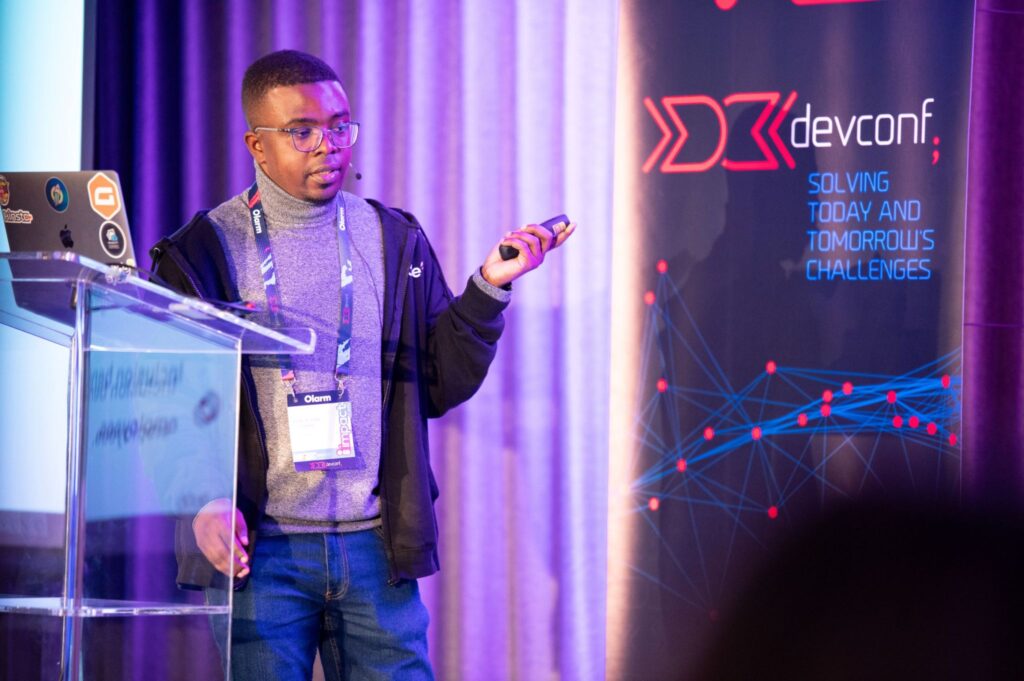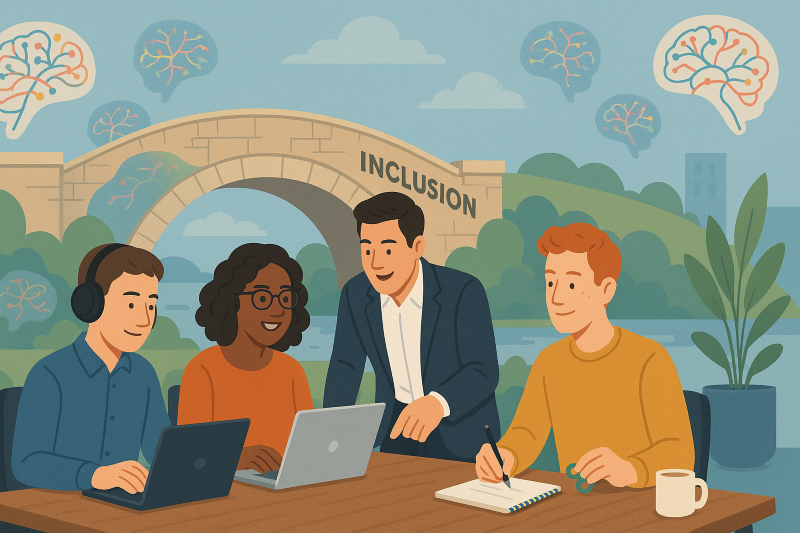At DevConf ZA 2025, I had the privilege of sharing a talk that is deeply personal to me. I spoke about creating better work environments for neurodivergent individuals, especially in the tech industry. The audience was incredible, engaged, curious, and eager to learn. We even had collaborative moments that made it feel more like a conversation than a one-way presentation.

For those who were unable to attend, here is a detailed recap of the session and more resources to help continue the conversation.
Understanding Neurodiversity
Neurodiversity refers to the natural variation in human brains and how we think, learn, and process the world. This includes conditions such as ADHD, Autism, Epilepsy, Dyslexia, Dyspraxia, OCD, and Tourette Syndrome.
Being neurodivergent is not about having a deficit. It is about having a different operating system. Our ways of thinking, working, and communicating may differ, but they bring value when understood and supported.
Many neurodivergent individuals remain undiagnosed or choose not to disclose due to stigma. Yet, we are already part of your teams and workplaces. Creating a space that acknowledges and respects these differences is key to inclusion.
Common Misconceptions
Here are a few myths I addressed during the talk:
“They just need to focus more.”
Focus is not a choice when executive dysfunction is involved. Providing structure, clarity, and options for flexibility is more effective than pressure.
“They’re being difficult.”
Accommodations like noise-canceling headphones or flexible hours are not special treatment. They are adjustments that allow someone to work at their best.
“Neurodivergence is overdiagnosed or trendy.”
Visibility has increased, but that does not make the experiences any less valid. Many adults are only now getting the answers they have sought for years.
“They cannot work well in teams.”
Neurodivergent individuals often thrive in team environments that are clear, collaborative, and respectful of differences. With the right environment, we bring powerful contributions.
Challenges in Collaboration
The challenges neurodivergent colleagues face are rarely about capability. Instead, they come from environments that are not designed with us in mind. Some examples include:
- Unclear instructions or sudden changes without explanation
- Sensory distractions like open-plan offices or noisy environments
- Social norms that feel confusing or exhausting
- Feedback that is vague or overly critical
These challenges are solvable with empathy, communication, and intentional design.
Strengths of Neurodivergent Colleagues
One of the most important parts of the talk was highlighting the unique strengths we bring to the workplace:
Creativity and Innovation
We often approach problems from different perspectives and can see patterns or connections that others miss.
Hyperfocus and Specialization
When deeply engaged, we can focus intensely for long periods, producing high-quality, detailed work.
Pattern Recognition
We are often quick to notice inconsistencies, trends, and opportunities that can be overlooked.
Empathy and Big-Picture Thinking
Many of us have strong emotional intelligence, deep care for user experience, and a commitment to fairness and accessibility.
Practical Inclusion at Work
Inclusion does not require expensive programs or sweeping changes. It begins with awareness and small intentional actions. Here are a few ways to build a more inclusive culture:
- Offer flexible working hours or remote options
- Encourage clear, written communication
- Provide quiet spaces or noise-reducing tools
- Make onboarding and processes easy to follow
- Avoid assumptions about how people prefer to work or interact
Neurodivergent employees thrive in environments that are supportive and adaptable.
My Personal Perspective
I live with both AuDHD and epilepsy. There were times in my career when I struggled not because of my ability, but because the environment did not support the way I work and process the world.
When I am in the right environment, one that is clear, calm, and encouraging, I do my best work. I wanted to share that experience because I know I am not alone. Many of us are navigating these systems silently, and it is time we made the workplace work better for everyone.
Looking Ahead
One of the things that came up during and after my talk was the need for ongoing connection, a space where neurodivergent individuals in tech can share experiences, support each other, and collaborate. While it’s still in the early planning stages, I’m exploring the idea of creating a community specifically for neurodivergent folks working in tech.
Importantly, this community won’t be exclusive to neurodivergent individuals, it will also welcome neurotypical allies who want to learn more about neurodiversity and how to better collaborate with neurodivergent colleagues. If that sounds like something you’d be interested in, stay tuned. I’ll be sharing more soon.
Where to Find Accurate Information on Neurodiversity
During the talk, I promised to share some trusted sources for learning more about neurodiversity, ADHD, autism, and related topics. Social media can be helpful, but it is also full of misinformation. These are some reputable places to start:
General Neurodiversity
- Neurodiversity Wiki – A community-driven but well-moderated introduction to various neurodiverse conditions
- NeuroClastic – Articles and stories written by neurodivergent individuals focused on advocacy and education
ADHD
- ADDitude Magazine – A resource filled with expert-backed articles, webinars, and tips for managing ADHD at all ages
- CHADD (Children and Adults with Attention-Deficit/Hyperactivity Disorder) – A nonprofit that offers research-backed support and community
- ADHD Foundation – the largest user-led organization in Europe, offering support to those with neurodevelopmental conditions such as ADHD, Autism, Dyslexia, Dyspraxia, Dyscalculia, OCD and Tourette’s syndrome.
- How to ADHD (YouTube) – Friendly, research-based, and full of practical strategies
Autism
- Autistic Self Advocacy Network (ASAN) – An organization run by and for autistic people, advocating for rights and inclusion
- The National Autistic Society (UK) – Practical guides and tools for understanding and supporting autistic individuals
- Autistica – Focused on scientific research and improving life for people on the spectrum
Instagram Accounts to Follow
Social media can be a powerful tool when used carefully. These Instagram accounts provide valuable insights, lived experiences, and helpful tips for navigating neurodivergence:
- @adhd_chatter_podcast – Insights and interviews from the ADHD Chatter Podcast.
- @adhdvision – ADHD education, infographics, and real-life strategies.
- @hidden20podcast – Personal stories and awareness from a neurodivergent perspective.
- @adhd_love_ – A couple navigating life and love with ADHD, sharing relatable and educational content.
This blog post is just the beginning. If you are a manager, a teammate, or someone who wants to be more inclusive, I encourage you to start by listening. Ask questions. Learn from neurodivergent voices. And take one step at a time toward building a workplace where everyone feels like they belong.
Let us keep the conversation going. If you have questions, want to collaborate, or just want to connect, feel free to reach out.

Comments
Loading comments...